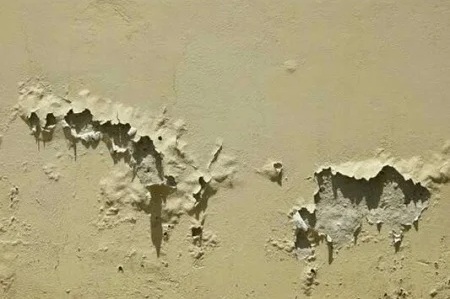Table of Contents
What Is Dampness In The Building?
The presence of moisture content in the building is known as dampness. Moisture content is presented in the various building components like the floor, wall, roof, etc.
Dampness in the building can be very dangerous because it can corrode the reinforcement bars. Timely action should be taken to repair dampness in the building.

Dampness is a state between wet and dry conditions. Damping in the building is one of the significant aspects to consider during building planning/development. Whenever disregarded, it will influence the structure antagonistically and will make unhygienic conditions for the people living there. Damping happens through the infiltration of water into the structural parts.
Dampness is an impressive issue for some property holders. It causes underlying issues in structures as well as, affects wellbeing, and makes a home unbelievably horrendous to reside in.
Causes Of Dampness In Building
- Heavy rainfall: When there is a lot of rain, water can seep into the building, causing dampness.
- Pipe leakage: If there are leaks in the pipes inside the building, water can escape and lead to dampness.
- Poor construction material: If low-quality materials are used during construction, they may not be able to prevent water from entering the building, resulting in dampness.
- Incompatibility of the building design with the environment: If the design of the building does not consider the local climate or surroundings, it can contribute to dampness issues.
- Excessive moisture content in the atmosphere: When the air has high humidity, it can create moisture problems inside the building, leading to dampness.
- Poor building orientation: If the building is not properly oriented to receive sunlight or airflow, it can hinder the drying process and contribute to dampness.
Effects Of Dampness
- Falling out plaster from its surface.
- The efflorescence of bricks.
- The painted surface looks ugly.
- Moisture corrodes metal in the building like steel bars.
Dampproofing Methods:
There are various methods adopted to remedy dampness in the building. The most common methods are as follows.
- Damp Proof Course or DPC.
- Constructing a cavity wall.
- Surface area treatment.
- Guniting.
- Integral treatment.
Faqs
Yes, prolonged dampness in buildings can lead to structural damage. Moisture can weaken the integrity of building materials, such as wood, causing rot, decay, and deterioration. This can compromise the structural stability of the building over time.
Condensation on windows is a common issue in buildings. To prevent it, ensure proper air circulation by opening windows or using extractor fans. Use double-glazed windows or install insulation film to reduce temperature differences. Additionally, avoid drying clothes indoors and use dehumidifiers to control humidity levels.
Yes, it is possible to remove mold and mildew caused by dampness. Small areas can often be cleaned using a solution of water and detergent. However, larger or persistent mold problems may require professional remediation services to ensure effective removal and prevent reoccurrence.
Yes, dampness can impact energy efficiency in buildings. Moisture in walls or insulation can reduce their effectiveness, leading to increased heat loss or reduced cooling efficiency. Addressing dampness issues can help improve energy efficiency and reduce heating or cooling costs.
Building regulations and standards vary by location, but many jurisdictions have guidelines and requirements related to dampness prevention. These may include specifications for damp-proofing, ventilation, and moisture control in building codes. Consulting local building authorities or professionals can provide specific information applicable to your area.
Read also: Storm Drain
I hope you liked my article. You can also read other articles on this website.
Thanks for reading!
Keep Learning!
